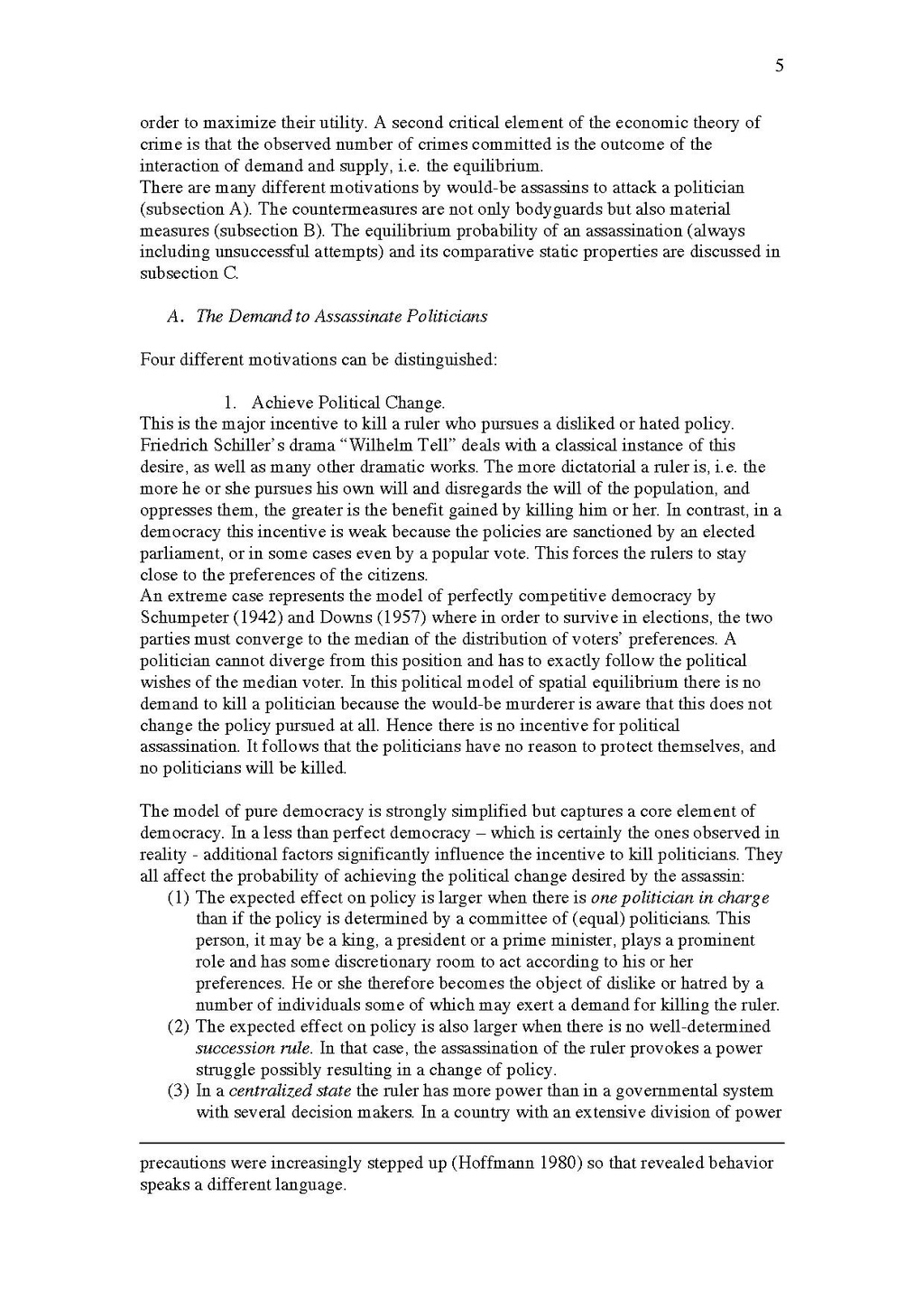order to maximize their utility. A second critical element of the economic theory of crime is that the observed number of crimes committed is the outcome of the interaction of demand and supply, i.e. the equilibrium. There are many different motivations by would-be assassins to attack a politician (subsection A). The countermeasures are not only bodyguards but also material measures (subsection B). The equilibrium probability of an assassination (always including unsuccessfUL mpts) and its comparative static properties are discussed in subsection C.
A. The Demand to Assassinate Politicians
Four different motivations can be distinguished:
1. Achieve Political Change. This is the major incentive to kill a ruler who pursues a disliked or hated policy. Friedrich Schiller's drama “Wilhelm Tell” deals with a classical instance of this desire, as well as many other dramatic works. The more dictatorial a ruler is, i.e. the more he or she pursues his own will and disregards the will of the population, and oppresses them, the greater is the benefit gained by killing him or her. In contrast, in a democracy this incentive is weak because the policies are sanctioned by an elected parliament, or in some cases even by a popular vote. This forces the rulers to stay close to the preferences of the citizens. An extreme case represents the model of perfectly competitive democracy by Schumpeter (1942) and Downs (1957) where in order to survive in elections, the two parties must converge to the median of the distribution of voters' preferences. A politician cannot diverge from this position and has to exactly follow the political wishes of the median voter. In this political model of spatial equilibrium there is no demand to kill a politician because the would-be murderer is aware that this does not change the policy pursued at all. Hence there is no incentive for political assassination. It follows that the politicians have no reason to protect themselves, and no politicians will be killed.
The model of pure democracy is strongly simplified but captures a core element of democracy. In a less than perfect democracy – which is certainly the ones observed in reality - additional factors significantly influence the incentive to kill politicians. They all affect the probability of achieving the political change desired by the assassin: (1) The expected effect on policy is larger when there is one politician in charge
than if the policy is determined by a committee of (equal) politicians. This person, it may be a king, a president or a prime minister, plays a prominent role and has some discretionary room to act according to his or her preferences. He or she therefore becomes the object of dislike or hatred by a
number of individuals some of which may exert a demand for killing the ruler. (2) The expected effect on policy is also larger when there is no well-determined
succession rule. In that case, the assassination of the ruler provokes a power
struggle possibly resulting in a change of policy. (3) In a centralized state the ruler has more power than in a governmental system
with several decision makers. In a country with an extensive division of power
precautions were increasingly stepped up (Hoffmann 1980) so that revealed behavior speaks a different language.
